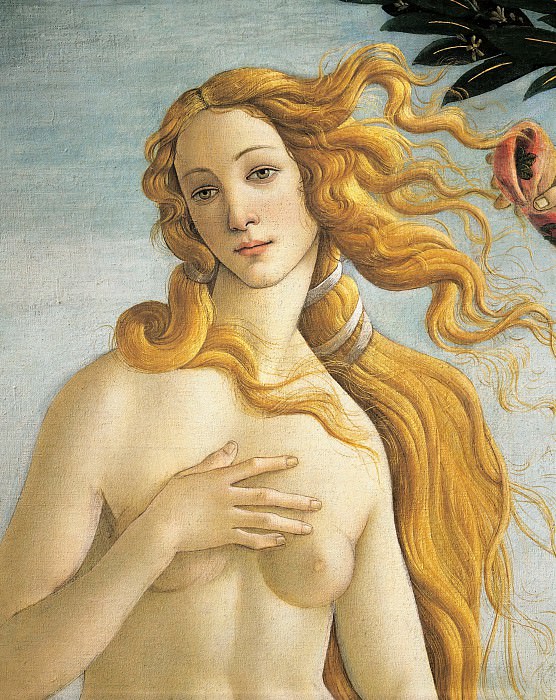The Emergence and Evolution of Feminist Art
Feminist art, a revolutionary movement that emerged in the late 1960s and early 1970s, represents a transformative shift in the art world, challenging traditional notions of gender, identity, and representation. Rooted in the feminist movements of the time, feminist art aimed to confront and dismantle the patriarchal structures that had long dominated the art world, both in terms of subject matter and the representation of women artists. This movement has not only redefined the landscape of art but has also contributed significantly to broader social and cultural discussions about gender and equality.
The roots of feminist art can be traced back to the early feminist movements, which sought to address systemic inequalities and advocate for women's rights across various domains. Women artists, who had long been marginalized and excluded from mainstream art institutions, began to question their roles and representation within the art world. They started to explore themes related to female identity, bodily autonomy, and the experience of being a woman in a male-dominated society. This exploration marked the beginning of a new era in art, where women's voices and perspectives were brought to the forefront in ways that had never been seen before.
One of the pivotal aspects of feminist art is its emphasis on personal and collective experiences as a source of artistic inspiration. Feminist artists often draw on their own lives and struggles to create work that resonates with broader societal issues. This approach contrasts with the traditional art historical canon, which frequently marginalized or ignored women's experiences. By placing women's stories and perspectives at the center of their work, feminist artists challenge the conventional narratives that have historically shaped art and art history.
The feminist art movement is characterized by its diversity and the range of artistic practices it encompasses. From performance art and installations to painting and sculpture, feminist artists have employed various mediums to convey their messages. Performance art, in particular, emerged as a powerful tool for feminist artists, allowing them to engage directly with audiences and address issues of identity, gender, and sexuality in dynamic and interactive ways. Artists such as Carolee Schneemann and Judy Chicago used performance art to explore the complexities of female identity and challenge societal norms.
In addition to individual artistic practices, feminist art also gave rise to collaborative projects and collectives that sought to amplify women's voices and foster a sense of community among women artists. One of the most notable examples is the Women's Art Movement, which was instrumental in creating spaces for women artists to exhibit their work and engage in dialogue about feminist issues. This collective approach not only provided a platform for women artists but also helped to establish feminist art as a significant and influential movement within the broader art world.
The impact of feminist art extends beyond the boundaries of the art world, influencing other areas such as education, activism, and cultural production. Feminist art has played a crucial role in raising awareness about gender inequality and advocating for social change. By challenging traditional representations of women and highlighting issues related to gender and identity, feminist art has contributed to a broader cultural shift towards greater inclusivity and representation. This impact is evident in various aspects of contemporary culture, including film, literature, and media, where feminist themes and perspectives continue to shape discussions and drive change.
As feminist art continues to evolve, contemporary artists are building on the legacy of their predecessors while addressing new and emerging issues. Today's feminist artists often explore themes related to intersectionality, recognizing the ways in which gender intersects with other aspects of identity, such as race, class, and sexuality. This intersectional approach reflects a more nuanced understanding of the complexities of identity and experiences, and it challenges the simplistic and often exclusionary narratives that have previously dominated discussions about gender and art.
In the digital age, feminist art has also embraced new technologies and platforms, expanding its reach and impact. Social media, for example, has provided a space for feminist artists to share their work, connect with audiences, and engage in conversations about gender and representation. This digital engagement has allowed feminist art to reach a global audience and has contributed to the growing visibility of feminist issues in contemporary culture.
Despite the significant progress made by feminist art, challenges remain. The art world continues to grapple with issues of gender inequality and representation, and feminist artists must navigate ongoing barriers to achieving equitable recognition and opportunities. However, the continued presence and influence of feminist art serve as a testament to the resilience and determination of artists who are committed to challenging the status quo and advocating for a more inclusive and equitable art world.
Feminist art has not only reshaped the art world but has also contributed to broader social and cultural changes. By highlighting the experiences and perspectives of women and challenging traditional narratives, feminist art has played a crucial role in advancing conversations about gender, identity, and equality. As the movement continues to evolve and adapt to new contexts and challenges, its impact will undoubtedly continue to be felt across various aspects of culture and society.
In summary, feminist art represents a powerful and transformative movement that has significantly impacted the art world and beyond. Through its focus on personal and collective experiences, diverse artistic practices, and collaborative efforts, feminist art has challenged traditional notions of gender and representation. Its influence extends into various areas of culture and society, contributing to ongoing discussions about gender, identity, and social change. As feminist art continues to evolve, it will undoubtedly remain a vital force in shaping the future of art and culture.




